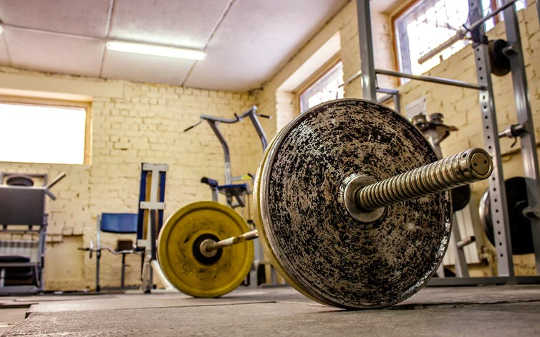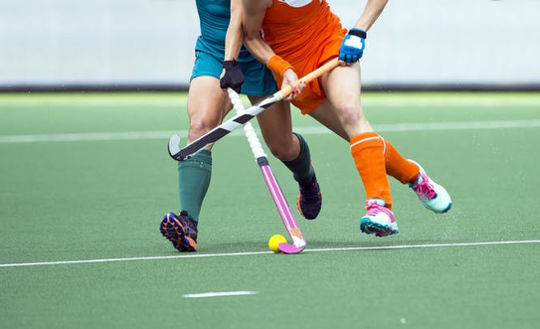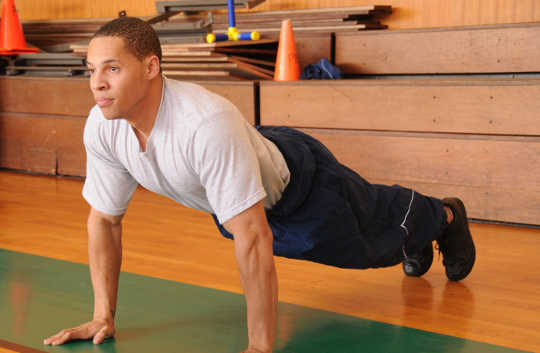- InnerSelf
- Read Time: 3 mins

If you want to get stronger and feel better after exercising – which is important because it encourages you to keep exercising – you don’t need a fancy gym.

If you want to get stronger and feel better after exercising – which is important because it encourages you to keep exercising – you don’t need a fancy gym.

You meet with a friend and tell her about a great book you’re reading. “It’s by a really famous author. Her name is, um … ”

Most of us know children who can run and play for hours and hours, taking only short rests.

Menstruation is often called the “last great taboo” in women’s sport. But periods are the media’s taboo, not sportswomen’s. Our new research showed that elite athletes are not afraid to talk about their menstrual cycle and how it affects them.

Hundreds of thousands of people fall short of their dieting and weight loss goals every year, and the incidence of obesity continues to rise. The fitness industry’s answer to this has been to continue on as planned and blame the soaring failure rates on the people themselves, creating a culture of overt and subtle fat-shaming.

Participating in yoga and mindfulness activities at school may help anxious third-graders improve their well-being and emotional health, according to a small study.

An ageing population is leading to a growing number of people living with dementia. Dementia is an umbrella term for a group of symptoms including memory impairment, confusion, and loss of ability to carry out everyday activities.
 A review of studies on exercise and happiness addresses some lingering questions about the effects of physical
A review of studies on exercise and happiness addresses some lingering questions about the effects of physical
activity on positive health conditions.

Most people think that the human spine is one of evolution’s great flaws. After all, around 80% of adults suffer from lower-back pain. What more evidence do you need? The truth is...

Day after day, we’re bombarded with so many media messages that rarely do we stop to think about what they’re telling us to think, do or feel.

Mental strength is so important to martial arts that researchers have found karate experts’ stronger punching force may be down to a better control of muscle movement in the brain, rather than increased muscular strength. Other studies have also found that children who practice Taekwondo improved in maths test scores, and behaviour.
 A 30-minute daily or alternate-day facial exercise program sustained over 20 weeks improved the facial appearance of middle-aged women, resulting in a younger appearance with fuller upper and lower cheeks, report researchers.
A 30-minute daily or alternate-day facial exercise program sustained over 20 weeks improved the facial appearance of middle-aged women, resulting in a younger appearance with fuller upper and lower cheeks, report researchers.
 Gyms across the country will be packed in the new year with people sticking, however briefly, to their New Year’s resolution to lose weight. Most of them do not know that the cards are stacked against them and that weight loss is much more complicated than working out and not eating dessert.
Gyms across the country will be packed in the new year with people sticking, however briefly, to their New Year’s resolution to lose weight. Most of them do not know that the cards are stacked against them and that weight loss is much more complicated than working out and not eating dessert.

Our latest study shows that if you’re obese but metabolically healthy (so-called “fat but fit”), you are still at a greater risk of cardiovascular disease compared with metabolically healthy people who are a normal weight.
 There is plenty of evidence that being physically active can reduce your risk of heart disease and stroke, but when do the benefits of exercise start to pay off?
There is plenty of evidence that being physically active can reduce your risk of heart disease and stroke, but when do the benefits of exercise start to pay off?
 Back pain is the single leading cause of disability in the world. In the US, four out of every five people experience back pain at some point in their life.
Back pain is the single leading cause of disability in the world. In the US, four out of every five people experience back pain at some point in their life.
 Exposure to air pollution on city streets is enough to counter the health benefits of exercise in adults over 60, according to a new study.
Exposure to air pollution on city streets is enough to counter the health benefits of exercise in adults over 60, according to a new study.
 Low back pain is a common problem affecting more than 80% of us at some point in our lives. Recommended treatments include staying active and, if possible, avoiding strong pain medicines such as opioids.
Low back pain is a common problem affecting more than 80% of us at some point in our lives. Recommended treatments include staying active and, if possible, avoiding strong pain medicines such as opioids.
 Most of us probably know exercising is associated with a smaller risk of premature death, but a new study has found that doesn’t have to happen in a CrossFit box, a ninja warrior studio, or even a gym.
Most of us probably know exercising is associated with a smaller risk of premature death, but a new study has found that doesn’t have to happen in a CrossFit box, a ninja warrior studio, or even a gym.
 You’ve heard this before, right? Physical activity is good for your heart, your overall health – and, believe it or not, even your bank account. In the United States today, most adults (50-95 percent) do not meet national physical activity recommendations.
You’ve heard this before, right? Physical activity is good for your heart, your overall health – and, believe it or not, even your bank account. In the United States today, most adults (50-95 percent) do not meet national physical activity recommendations.
Page 11 of 13

